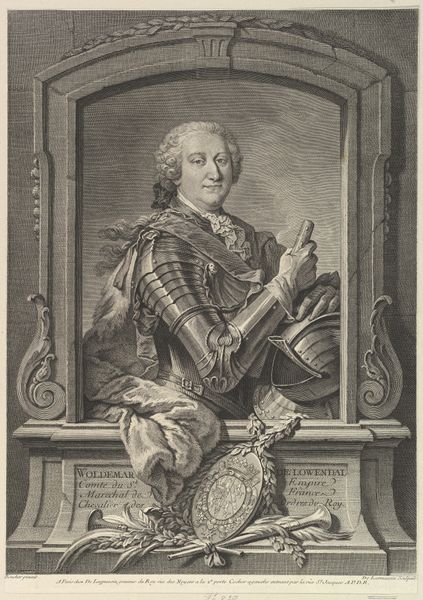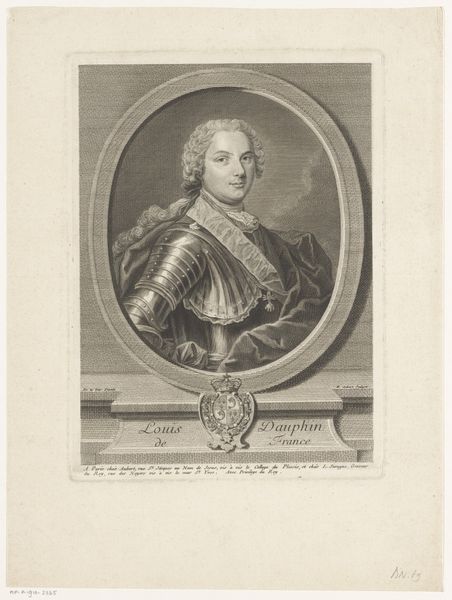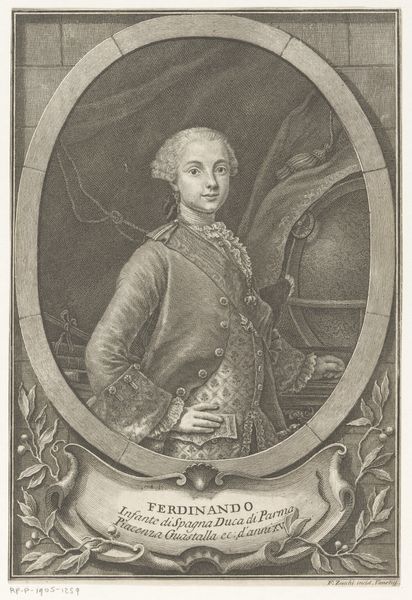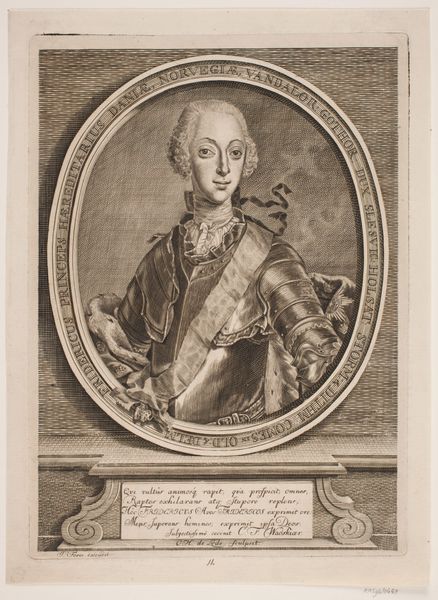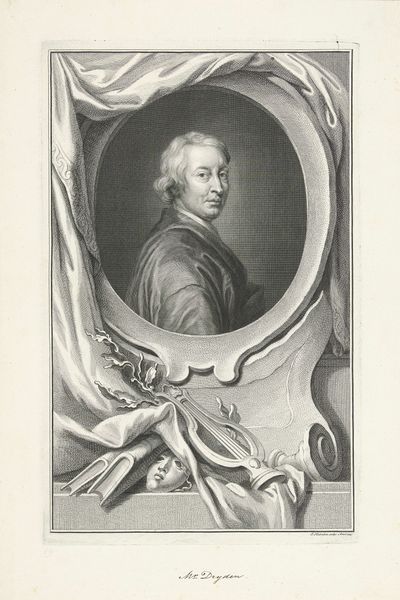
Portret van Maximiliaan III Jozef, keurvorst van Beieren 1745 - 1818
0:00
0:00
aegidiiverhelst
Rijksmuseum
Dimensions: height 249 mm, width 173 mm
Copyright: Rijks Museum: Open Domain
Curator: The level of detail is quite something, isn't it? Look at the delicate cross-hatching used to define the armour and the facial features of this man. Editor: It certainly gives a feeling of controlled power. But perhaps we should introduce our viewers to this portrait? Curator: Certainly. Here we have an engraving of Maximiliaan III Jozef, Elector of Bavaria. It's believed to have been produced somewhere between 1745 and 1818. Editor: It’s interesting that an artwork meant to memorialize the elector includes a full suit of armour. We often see powerful men from this era immortalized this way, a choice reflecting both their status and their political environment, a need to portray strength amid European conflict. It is interesting how Verhelst positions Maximiliaan as a man ready for war even though the context might suggest otherwise. Curator: Absolutely. The armour is visually striking, and this print, a masterful example of line engraving, gives it such remarkable texture. Each plate on the armour reflects light in its unique way, thanks to the varying depth and density of the engraved lines. Verhelst really pushes the medium here. Editor: One must consider Bavaria's religious context and gendered power structures, since portrayals of Catholic rulers almost always emphasize an inherited right to rule, usually linking them to familial traditions and military or religious power, regardless of reality. Do we view the Elector as competent in his own right? This image projects established power and access. Curator: Those inscriptions ringing the portrait also lend a great deal to that effect, with its formal pronouncements and clear references to ancestry. A carefully constructed identity here. Editor: Very true. Considering its historical period and function, what appears to be limited contrast actually enhances the noble aura. The engraver utilizes tonal modulation—very precise work to create dimension within the oval format. Curator: Precisely! And from a material point, the choice of a black and white engraving serves the purpose, echoing the permanence and gravity attached to state portraiture during the Enlightenment era, especially in expanding the availability of the image. Editor: The intersection of technique and history gives us many layers to appreciate. Curator: It certainly does, making this a piece of significant interest.
Comments
No comments
Be the first to comment and join the conversation on the ultimate creative platform.


